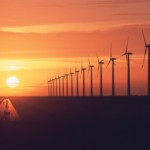Worlds largest wind farm in California to see massive repowering
 Turbines at the Altamont Pass wind farm in California, one of the earliest wind farms in the United States and the largest concentration of wind turbines in the world, will soon be repowered and upgraded.
Turbines at the Altamont Pass wind farm in California, one of the earliest wind farms in the United States and the largest concentration of wind turbines in the world, will soon be repowered and upgraded.
The San Jose Mercury News reported last week that a vast number of turbines at Altamont Pass east of San Francisco are to be replaced by newer, more efficient models.
As many as 100 of the new 2.3 MW turbines, which are manufactured by Siemens and are each expected to power up to 700 homes a year, are to be installed by NextEra Energy Resources by 2015.“It’s almost a complete revolution in the way that you capture the wind,” the newspaper quoted Anthony Pedroni of NextEra, which owns about half of the wind turbines in the Altamont Wind Resource Area, as saying. “The new turbines are [132 metres] tall from the base to the tip of the blade, and the higher you go, the faster the wind speeds are.”
Approximately half of the remaining 4,000 30-metre-high turbines will be replaced in the repowering agreement with turbines that are 132 metres tall. The newspaper says that for each new turbine installed, 23 of the older ones will be removed.
According to the newspaper, the plan follows an agreement reached in December with Californians for Renewable Energy, local chapters of the Audubon Society and the state Attorney General’s Office to repower the area with larger turbines that some say could reduce the bird mortality rate by 80%.
Environmentalists have criticised the high-profile Altamont wind farm in eastern Alameda and Contra Costa Counties for eagle, hawk and bat deaths. But, birds flying into wind turbines represent only a small fraction of those caused by other human-related sources such as airplanes and buildings. It has been estimated that wind turbines in the US cause the direct deaths of only 0.01-0.02% of all of the birds killed annually by collisions with man-made structures and activities. In the UK, the Royal Society for the Protection of Birds (RSPB) has stated that “in the UK, we have not so far witnessed any major adverse effects on birds associated with wind farms.”
Today, wind farms are always subject to an Environmental Impact Assessment to ensure that their potential effect on the immediate surroundings, including fauna and flora, are carefully considered before construction is allowed to start.
“Wind energy on a commercial scale was born in the Altamont,” Nancy Rader, executive director of the California Wind Energy Association, was quoted as saying. “Our understanding of its environmental impacts has evolved just as much as the technology has.”






